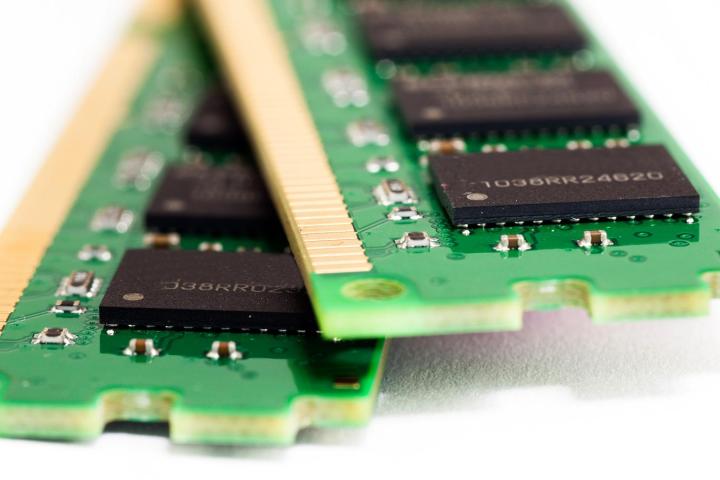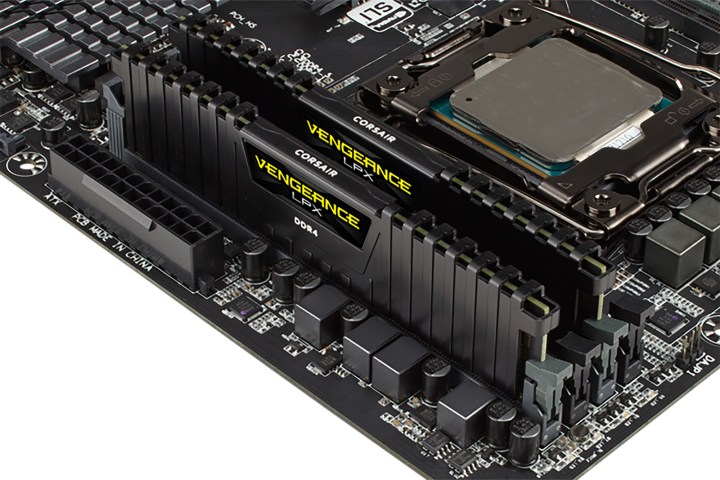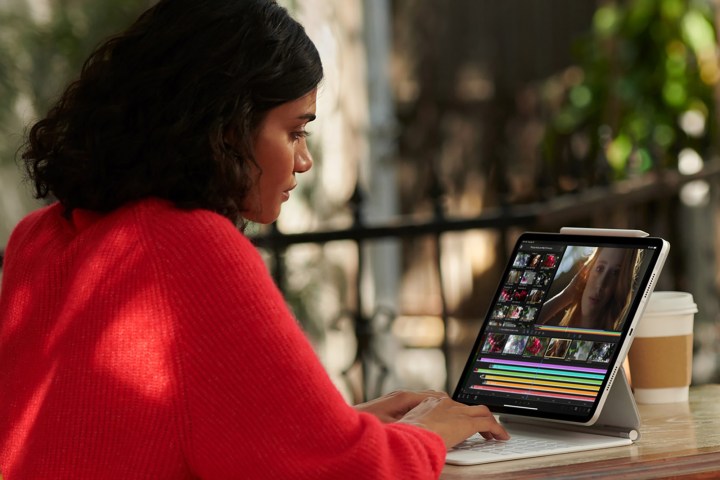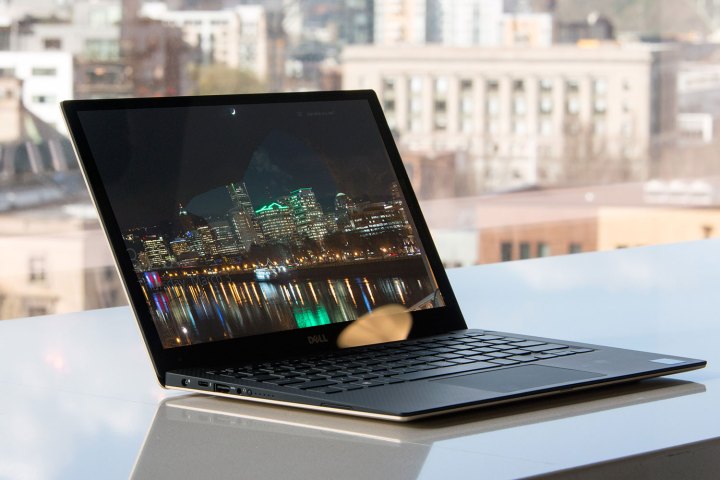Random access memory, usually shortened to RAM or simply “memory,” is one of the most important parts of any computing device. Modern PCs, tablets, and phones typically have from 2GB up to 32GB, though some have even more. But how much RAM do you need, exactly?
Adding more RAM to your computer won’t always make it run faster, so it’s important to buy an appropriate amount based on your computer and the applications you want to run. Windows 10, for example, takes about 2GB of RAM on its own, while the ChromeOS featured in the best Chromebooks requires far less.
In this guide, we’ll walk you through how much RAM you need for a tablet, laptop, desktop, and gaming machine. If you want to know how much RAM you need for a smartphone, we have a guide for that, too.
See more
Overview: How much RAM do you need?

In a nutshell, here are some simple guidelines that apply to most PCs and Macs:
- 4GB: Low-end Chromebooks and some tablets come with 4GB of RAM, but it’s only worth considering if you’re on an extreme budget.
- 8GB: Typically installed in entry-level notebooks. This is fine for basic Windows gaming at lower settings, but rapidly runs out of steam.
- 16GB: Excellent for Windows and MacOS systems and also good for gaming, especially if it is fast RAM.
- 32GB: This is the sweet spot for professionals. Gamers can enjoy a small performance improvement in some demanding games, too.
- 64GB and more: For enthusiasts and purpose-built workstations only. Engineers, professional A/V editors, and similar types need to start here and go higher if needed.
Remember, buying more RAM than you need doesn’t net you any performance benefit — it’s effectively wasted money. Buy what you actually need, and spend the remaining budget on more important components like the CPU or graphics card.
An introduction to RAM

Memory capacity is often confused with the long-term storage offered by a solid-state or mechanical hard drive. Sometimes even manufacturers or retailers will mix up the terms.
RAM is the same thing, technically, but it serves a very different purpose. Instead of a large amount of slow storage — like you’d find on a mechanical hard drive — RAM is a small amount of extremely fast storage. As you open programs, it stores data that they need access to quickly in system memory.
Different programs require different amounts of RAM (we’ll detail a few intensive applications next), but regardless of the application, it’s likely to use at least a little bit of RAM. That adds up over time, and if you don’t have enough RAM to go around, the applications you’re using will severely slow down. You can still launch them, but if you run out of RAM, the application won’t have access to the ultra-fast storage RAM provides to quickly access the data it needs.
You can also have too much RAM. If, for example, you’re only using 12GB of RAM under the most demanding circumstances and you have a 16GB kit, upgrading to a 32GB kit (assuming all other aspects are equal) won’t impact your performance whatsoever. It’s effectively wasted money.
Because of that, it’s important to choose a capacity that slightly exceeds your needs without going overboard. You can buy more RAM, and it won’t negatively impact performance. But that’s a bit like buying a house with four bedrooms and only using two of them.
System RAM shouldn’t be confused with the dedicated memory used by discrete graphic cards. High-end 3D games rely on video RAM, or VRAM, to temporarily store image data, like textures. Most current-generation graphics cards use GDDR5, GDDR6, and GDDR6X.
Meanwhile, system RAM is identified with DDR3 or DDR4, with the number identifying the generation. The newer term DDR5 indicates the latest RAM generation, although compatible devices may not appear in the wild for a while. You can stay up to date on what to expect with our guide to DDR5.
DDR6 is in development but not readily available.
If all of this sounds confusing, rest assured that most manufacturers are very good at identifying RAM clearly so consumers know what’s what.
RAM-heavy applications

The operating system and the web browser typically consume the most RAM, though some applications and games can use more than everything else combined. There’s not much you can do to make Windows or MacOS use less memory, but more RAM in your computer means that you can open more browser tabs in Chrome, Firefox, Edge, and so on.
In addition, more complex websites use more RAM than others. For example, a simple text news story is relatively light on memory, while something like Gmail or Netflix uses a lot more.
The same goes for offline programs. A chat program or a game like Minesweeper will use almost no RAM, while a gigantic Excel spreadsheet, a huge Photoshop project, or a graphics-intensive game like Wolfenstein: Youngblood may use gigabytes by themselves.
Outside of games and general browsing, professional applications tend to hog the most RAM. In particular, video editing applications like Adobe Premiere and digital audio workstations (DAWs) like Pro Tools are memory hungry. We’ll get into specifics for tablets, laptops, and desktops below, but 16GB usually does the trick for a desktop application. If you’re using applications like Premiere or Pro Tools, though, it’s a good idea to upgrade to 32GB (similar applications can actually take advantage of all of that RAM).
How much RAM for tablets?

Tablets are not expected to deal with heavy-duty software tasks, so their RAM needs tend to be pretty low — similar to a lot of smartphones.
However, as multi-tab browsers and more complex software continue to make the transition, tablet needs are becoming more and more similar to laptop needs. Current spec options typically range from 2GB to 16GB of RAM, with other considerations like battery life and processor speed often being of greater consideration.
With something like the iPad Mini, which touts 3GB of RAM, its design is more focused on its vibrant display and long battery life. Meanwhile, Apple’s latest 12.9-inch iPad Pro has 6GB of RAM to accommodate the 2-in-1 crowd, although the new 2021 models will ship with 8GB or 16GB. Microsoft’s Surface Go 2 has a default 4GB with an option of 8GB because it falls somewhere between a laptop and a tablet — our reviewer was not entirely won over.
Ultimately, this gives us a guideline for choosing tablet RAM:
- 4GB is OK for lightweight users.
- 8GB is a better fit in most tablet cases.
- 16GB if you plan to use a tablet as your primary PC.
Remember, tablets are generally complementary devices that reside between your smartphone and your PC. If you’re leaning more toward a laptop replacement, buy a tablet configuration with the RAM you’d need for any other desktop or laptop.
How much RAM for laptops?

Most laptops come with 8GB of RAM, with top-tier machines packing 16GB — even up to 32GB for the most powerful gaming notebooks. As previously mentioned, tablet and laptop needs are converging, but most users feel comfortable running more complex programs on laptops, which means RAM has a more important role here.
For something like a Chromebook, which mostly relies on cloud-based apps and provides very little storage space, you won’t need much in the way of RAM and will be fine for 8GB of RAM when buying a Chromebook, especially since you can now use the Google Play Store to download Android apps directly on your machine.
For Windows and MacOS, however, you should treat 8GB as a starting point and think about bumping that number up to 16GB. Most of the best laptops come with 16GB for good reason. Windows 10, for example, consumes around 2GB of RAM before you even open an application. If you are doing a lot of graphic design work or are planning on dabbling in some higher-end gaming, you may want to consider increasing that to 16GB.
You’d only need to go past that if you perform certain tasks, like editing huge video or photo files — the kind of thing you’d normally do on a desktop. Most people don’t use a laptop for such tasks, but if you do, buying enough RAM is crucial. It’s more difficult to upgrade RAM in a laptop (or, in some recent models, impossible) compared to a desktop, so buying what you need at the start is paramount.
How much RAM for desktops?

In 2021, prices of all components, including RAM, are heading upwards. That’s a shame as we would love to be able to recommend you always err on the side of more RAM for new builds. A decent 16GB kit that cost $50 a couple of years ago is likely to cost $80 now, with prices increasing as you increase clock speeds and tighten the latency timings. We list some of our top recommended kits that money can buy in our roundup of the best RAM.
People tend to keep their desktop computers around longer than tablets or laptops, so planning for the future is worthwhile. 16GB is a good place to start. While you may be able to get away with less, when you’re only saving $30 or so, it’s worth future-proofing yourself with 16GB.
An upgrade to 32GB is a good idea for enthusiasts and the average workstation user. Serious workstation users may go further than 32GB but be prepared for higher costs if you want speed or fancy features like RGB lighting. Anything beyond that is the realm of extreme specialty rigs equipped to handle huge datasets, staggeringly large video files, or niche programs designed for researchers, corporations, or government.
Desktop users should pay attention to their motherboard’s DIMM slots, too (the spaces where your RAM sticks snap in). Most motherboards use dual-channel or quad-channel memory, and they have requirements for where you should place the sticks. For dual-channel, it’s usually the second and fourth slot on a full-sized motherboard, but it’s best to consult your motherboard’s manual.
How much RAM do you need for gaming?

16GB of RAM is the best place to start for a gaming PC. Although 8GB was enough for many years, new AAA PC games like Cyberpunk 2077 have an 8GB of RAM requirement, though up to 16GB is recommended. Few games, even the latest ones, will actually take advantage of a full 16GB of RAM. Instead, the extra capacity gives you some wiggle room in running other applications while your games are running.
For the vast majority of gamers, 16GB is enough. However, if you plan on streaming or running multiple applications while your games are running — OBS Studio, a web browser, etc. — 32GB will give you a little more room. You won’t notice any performance benefits between 16GB and 32GB solely in games, however, so prioritize buying fast RAM if you’re only interested in gaming.
RAM speed versus capacity
While you won’t see any performance improvement by adding more RAM to your system if you already have what you need, the same cannot be said when it comes to RAM speed. Right now, DDR4 is the standard across desktops, laptops, and tablets. Each DDR generation has a range of speeds, with DDR4 starting with DDR4-1600 and ending with DDR4-3200. The number at the end notes the memory’s speed. The benefit of faster memory is simple: More cycles per second means the module can read and write data faster.
It’s not as simple as buying RAM sticks with a higher number, though. DDR4 memory modules are all rated to run at 2133MHz, and it doesn’t matter what modules you buy or what they’re rated for, they’ll run at 2133MHz out of the box. That presents a problem if you bought memory rated for 3200MHz. The speed your RAM is rated for is just that: a rating. That means the manufacturer has verified that the modules work at that speed, but it doesn’t mean they run at that speed out of the box.
Enter Intel Extreme Memory Profile (XMP). Instead of shipping at a faster speed, faster memory modules come with a profile on-board, and you can easily activate the profile through your motherboard’s BIOS. To be clear, we’re not talking about overclocking your memory past the recommended speed (it’s possible, though the performance benefits aren’t always worth the effort). We’re just referring to activating the speed your memory is rated for. It’s free performance, so it’s worth taking.
You need to make sure that your motherboard actually supports the memory speed your modules are rated for and that it supports XMP (most modern motherboards do). As for the performance benefit of faster memory, it really depends. Different applications react differently to faster memory, and there are even differences between Intel and AMD. However, if you bought faster RAM sticks or plan to buy them, you’ll want to enable the XMP profile in your BIOS to get the most out of your purchase.
This can be critical to performance depending on your configuration. AMD’s APUs, for example, perform much better in games when paired with fast DDR4 memory. Similarly, certain Intel chips, such as the Core i5-11400, take kindly to faster memory.
Upgrading your RAM can be easy and inexpensive
RAM isn’t that expensive, and it’s the easiest component to upgrade in a desktop PC — laptops, too, in many cases. Buying a generous amount is wise, but don’t go crazy. There’s not much reason for a gamer to exceed 32GB for now, and no reason to exceed 16GB if all you want to do is watch Netflix.
If your system does eventually become restricted by RAM, you can just add more. This is a good idea even if you don’t feel comfortable upgrading yourself, as the charge for installing RAM at your local PC store should hover around $40 to $60.
Editors' Recommendations
- Apple’s VR headset could launch early, and that’s risky
- Grammarly’s new ChatGPT-like AI generator can do a lot more than proofread your writing
- Meta Quest Pro vs. Quest 2: a clear choice for VR gaming
- If you have an Nvidia graphics card, your CPU may be suffering right now
- The best HP laptops






